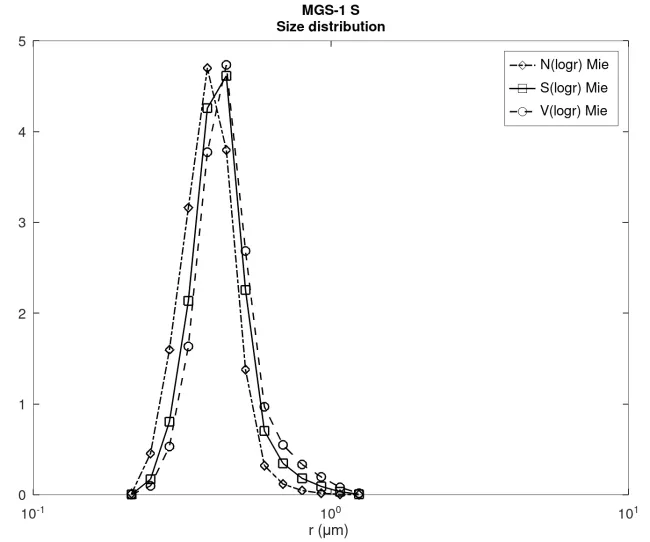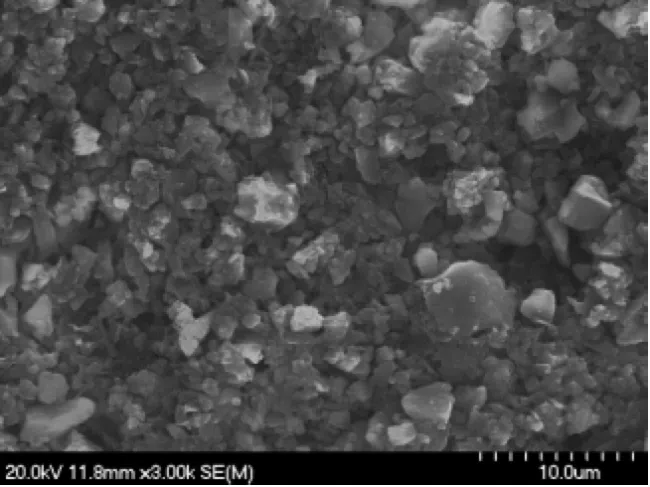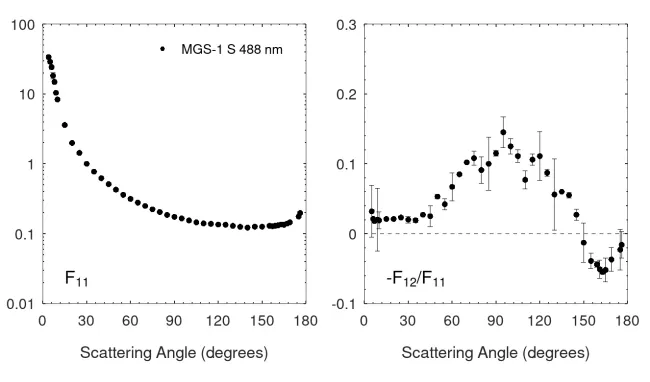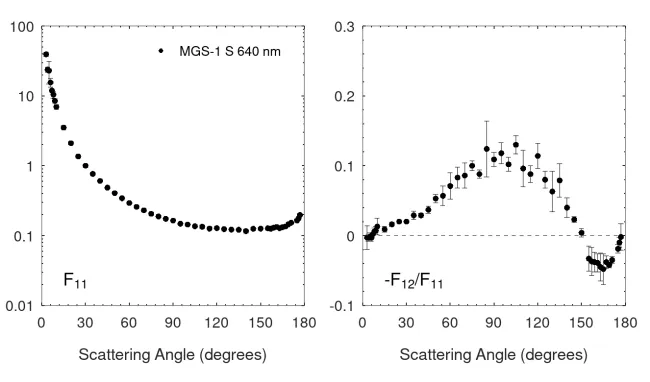
Martian Analog (MGS-1 S)
Practical significance
The MGS-1 analog is a mineralogical standard for basaltic soils on Mars, developed based on quantitative mineralogy from the MSL Curiosity rover.
Origin
The MGS-1 (Mars Global Simulant) is made by sourcing individual minerals, including a proper treatment of the X-ray amorphous component. It was developed by the University of Central Florida.
Main constituent
Plagioclase
Color
Gray
Particle size Mie: reff (μm)
0.4
Particle size Mie: veff
0.06
Particle size
The sample was processed at the Instituto de Cerámica y Vidrio (CSIC-ICV) to produce a narrow particle size distribution of submicron particles.
Size distribution plot:

Size distribution table
SEM/TEM images:

Scattering matrix (1) wavelength in nm
488.00 nm
Scattering matrix (1) table
Scattering matrix (1) plot:

Scattering matrix (2) wavelength in nm
640.00 nm
Scattering matrix (2) table
Scattering matrix (2) plot:

Angle range (deg)
[3,177]
Reference/s